I am new in auto layout. I have done all of my project from xib file, but now I faced a problem where I have to update an view's height programmatically. I have tried below but now working.
[[self view] addConstraint:[NSLayoutConstraint constraintWithItem:loginContainer attribute:NSLayoutAttributeHeight relatedBy:NSLayoutRelationEqual toItem:nil attribute:NSLayoutAttributeNotAnAttribute multiplier:1.0f constant:loginFrame.size.height]];
In console it's shows
Unable to simultaneously satisfy constraints.
Probably at least one of the constraints in the following list is one you don't want. Try this: (1) look at each constraint and try to figure out which you don't expect; (2) find the code that added the unwanted constraint or constraints and fix it. (Note: If you're seeing NSAutoresizingMaskLayoutConstraints that you don't understand, refer to the documentation for the UIView property translatesAutoresizingMaskIntoConstraints)
(
"<NSLayoutConstraint:0x78724530 V:[UIView:0x790cdfb0(170)]>",
"<NSLayoutConstraint:0x787da210 V:[UIView:0x790cdfb0(400)]>"
)
Will attempt to recover by breaking constraint
<NSLayoutConstraint:0x78724530 V:[UIView:0x790cdfb0(170)]>
Make a symbolic breakpoint at UIViewAlertForUnsatisfiableConstraints to catch this in the debugger.
The methods in the UIConstraintBasedLayoutDebugging category on UIView listed in <UIKit/UIView.h> may also be helpful.

